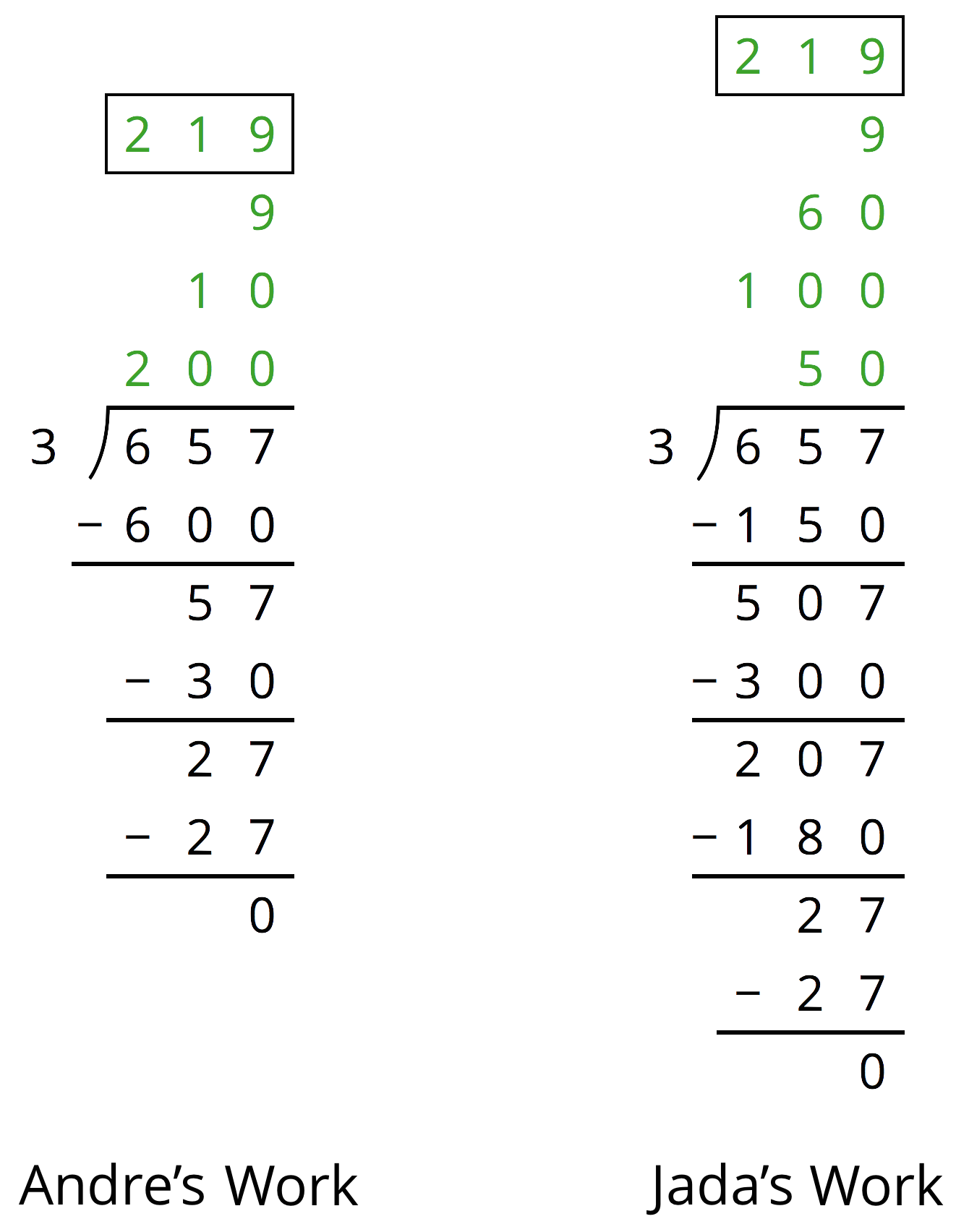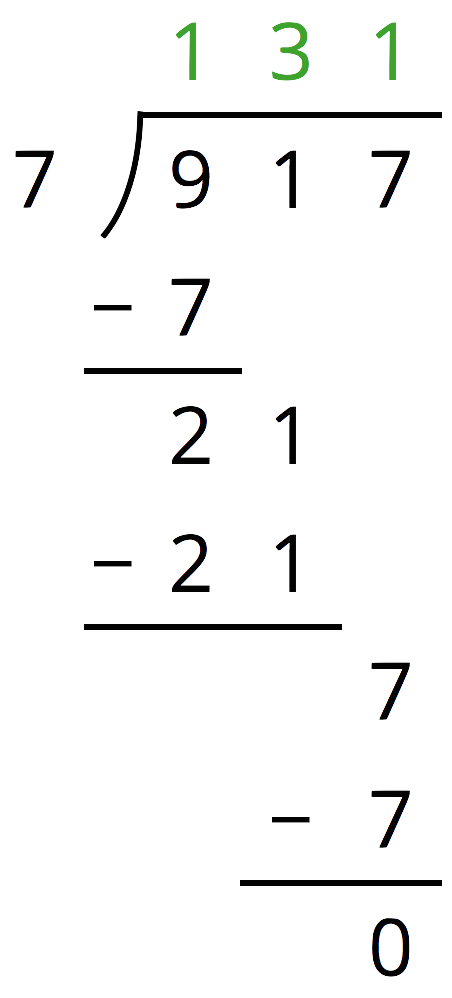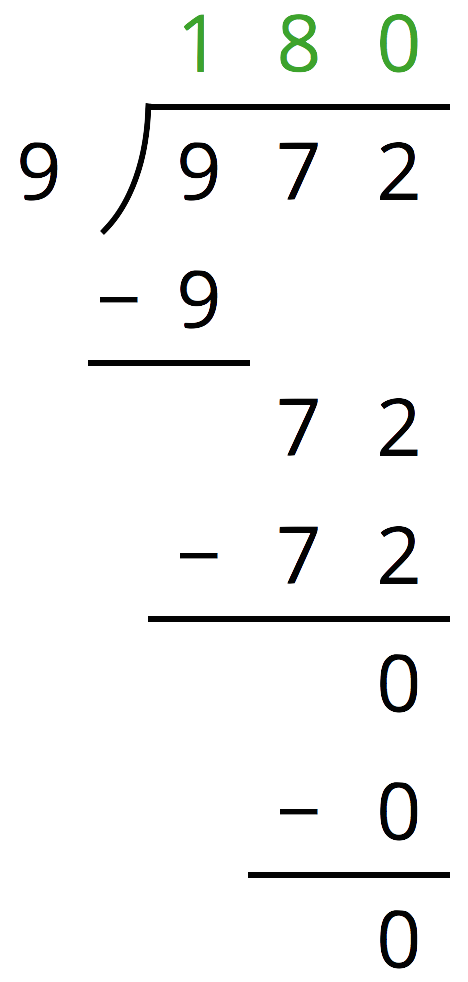Lesson 18
Using Long Division
Problem 1

- How is Jada's work the same as Andre’s work? How is it different?
- Explain why they have the same answer.
Solution
For access, consult one of our IM Certified Partners.
Problem 2
Here is a long-division calculation of \(917 \div 7\).

- There is a 7 under the 9 of 917. What does this 7 represent?
- What does the subtraction of 7 from 9 mean?
- Why is a 1 written next to the 2 from \(9-7\)?
Solution
For access, consult one of our IM Certified Partners.
Problem 3
Han's calculation of \(972 \div 9\) is shown here.

- Find \(180 \boldcdot 9\).
- Use your calculation of \(180 \boldcdot 9\) to explain how you know Han has made a mistake.
- Identify and correct Han’s mistake.
Solution
For access, consult one of our IM Certified Partners.
Problem 4
Find each quotient.

Solution
For access, consult one of our IM Certified Partners.
Problem 5
The mass of one coin is 16.718 grams. The mass of a second coin is 27.22 grams. How much greater is the mass of the second coin than the first? Show your reasoning.
Solution
For access, consult one of our IM Certified Partners.
(From Unit 3, Lesson 15.)Problem 6
One micrometer is a millionth of a meter. A certain spider web is 4 micrometers thick. A fiber in a shirt is 1 hundred-thousandth of a meter thick.
-
Which is wider, the spider web or the fiber? Explain your reasoning.
- How many meters wider?
Solution
For access, consult one of our IM Certified Partners.
(From Unit 3, Lesson 15.)